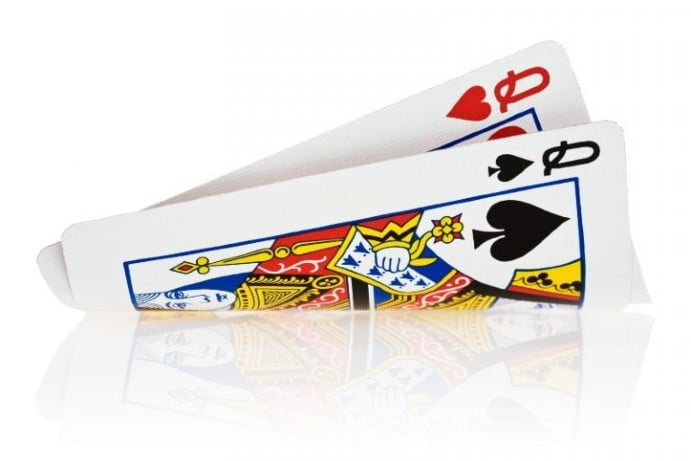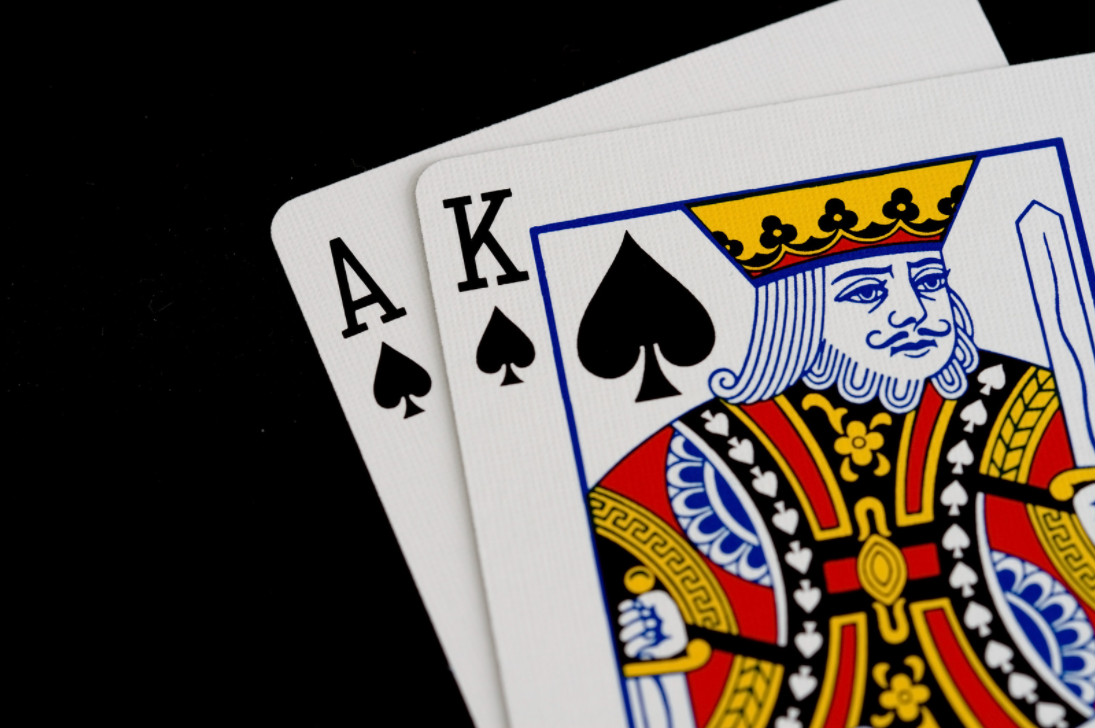There’s a lot to it when it comes to learning how to win in poker. While the rules of poker are quite easy to grasp, if you want to beat your opponents consistently you need to either memorize a lot of stuff or learn through experience. Many beginners ask if there is any shortcut to become a winning player? The closest thing you can have to that is our poker cheat sheet, where we’ve put our best tricks & tips for you to win. The cheat sheet works best at low stakes online games like $0.02/0.05 and $0.05/0.10 or live poker with $1/2 blinds.
Your downloadable poker cheat sheet
Our poker cheat sheet is perfect for new players who have a solid grasp on the rules of poker and some experience playing the game but can’t yet win consistently. These strategies are used daily even by our high stakes Team Pros as well – that’s why we know they’re so effective! We’ve included additional sections of different areas of Texas Holdem for advanced players on top of this poker cheat sheet. This completes the basic information, like the best starting hands and poker hand rankings, found in the cheat sheet. So, make sure to read our whole article if you already have some experience on your belt!
We recommend you to either bookmark or print both the cheat sheet and the advanced tips so that you have everything available to apply those while you play. It’s definitely going to require some patience on your part, as you can’t master poker overnight even with the best poker coach or training materials in the world. By applying this information consistently at the tables you will soon become a poker beast at the stakes you play!
All these elements are explained in great detail in this post. This way you not only know what to do at the tables but also why you should do those things. Great players are always looking for the why’s behind every play. Asking the right questions is key to making better poker decisions.
If you’re looking for starting hands charts, we have created for you a downloadable starting hands cheat sheet.
How to play with the best bonuses
Many players underestimate the long-term effect that poker rakeback and bonuses have on their profits. Don’t be one of those players – instead, always look for the best deposit bonuses and rakeback offers that you can find. When you have a losing month, any extra cashback you get by playing can help you to recover your bankroll faster.
How can you find the best bonuses to play with? One way is to regularly check our guide to online poker bonuses produced by our experts here at Beasts Of Poker. There you can find the latest info on deposit bonuses, rakeback offers and ongoing promotions on different poker rooms. This way you don’t miss any juicy promotions that could bring massive profits in your pockets!
How to find and play in soft games
There’s a saying that all poker players know but many fail to remember in the heat of the battle: If you can’t spot the sucker in your first half-hour at the table, then you are the sucker! This wisdom from the movie Rounders should be taken into an extreme length when deciding where to play. Even if you’re playing against slightly worse players than yourself, the rake might eat all your winnings in Texas Holdem or Pot-Limit Omaha. For best results, you should look for games that are way softer than the average game at your typical stakes.
Recognizing a soft game is pretty easy, but finding one can be difficult. How should you go about it? The first step is to open accounts on as many trustworthy online poker sites as you can find. The second step is to keep many lobbies of different poker clients open. This way you can scan the lobbies during your poker sessions and grab a seat at new tables that look juicy.
The best players in poker are almost without exception extremely well networked. Besides analyzing strategies and hands with each other, top pros frequently analyse the games on different poker rooms and discuss where the best action currently is. There’s no reason for you not to do the same. You can find like-minded people on poker forums and Discord channels, for example on Beasts Discord.

Poker hands cheat sheet: How to choose the right starting hands
Once you’ve found a great bonus to play and a soft game, it’s time to focus on your actual strategy at the table. The foundation for playing great poker comes from how well you choose your starting hands. If you ignore the importance of starting hands selection, you’re unlikely to make a profit at the tables!
While it’s not practical to give you an exact poker hand cheat sheet for every type of game, you should have the basic 6-max poker hand chart as your baseline. It tells you which two cards to play from each position at a 6max table. This hand chart was created with a little help from a special poker software.
Here are the starting hands you should get involved in the pot with from each position:
Lojack: +44, +ATo, KQo, +T9s, +A2s
Hijack: +33, +ATo, +KJo, +65s, +A2s, +K7s
Cutoff: +22, +A8o, +KTo, +54s, +A2s, +K3s, +Q5s, +J7s
Button: +22, +A3o, +K8o, +54s, +64s, +85s, +A2s, +K2s, +Q2s, +J4s, +T5s
Small Blind: +22, +A2o, +K9o, +98o, +54s, +64s, +74s, +84s, +A2s, +K2s, +Q4s, +J6s
Once you gain more skill and notice how your opponents are playing, you can start to deviate from this baseline strategy. There are two rules of thumb to follow regarding this:
Rule 1: Play more hands against weak opponents and players who fold their blinds too often
Rule 2: Play fewer hands against good players who give you trouble postflop
One important thing to keep in mind is that you will not get premium starting hands with the same frequency all the time. There will be times when you go for several hundred hands and barely see any premium pocket pairs. Sometimes it’s tempting to play a hand simply because it looks good, even though it’s not among the starting hands for that position. Do not give in to this temptation! Patience is a virtue in poker. Have the discipline to wait for proper starting hands as it will pay off in the long run. Same goes for catching a great poker hand such as a three of a kind or a straight postflop, but more on that later!

Which hands to 3-bet and 4-bet
Many factors go into which hands to 3-bet and 4-bet: Position, the opening range of the original raiser, raise size, effective stacks and postflop skill differences. In Texas Holdem, broadway two cards that form a pair have the biggest amount of equity. That’s why our go-to play with them is 3-betting. If you’re somewhat new to poker, it’s best to start with a solid value-heavy range for both your 3-bets and 4-bets.
You should 3-bet and 4-bet in Texas Holdem if you’re dealt these hole cards:
Hands to 3-bet: AA, KK, QQ, JJ, TT, AK, AQs
Hands to 4-bet: AA, KK, QQ
Why you shouldn’t worry about 3-bet bluffs & 4-bet bluffs
The big winners in poker are not obsessing about having balanced 3-bet and 4-bet ranges with a proper amount of bluffs. Instead, they’re focused on exploiting their opponents & playing in good games. Of course it’s part of a balanced poker strategy to have some bluffs in your range, but first you should learn to play simple, fundamentally sound poker.
Just because you’ve been playing tight doesn’t mean that your hand will be face up once reraise preflop. Only after you’ve mastered the fundamentals does it become worthy to learn how to play a balanced strategy. And, even then it won’t bring you as much profit as exploiting weak opponents will!
How to value bet your strong hands
Ask any long-time poker pro about the role of value betting and you will get the same answer: It’s a vital skill and the majority of profit comes from value betting well. A value bet is a bet you make when you expect to get called by a worse hand more than half the time. Sometimes our opponent has a better hand when we value bet – don’t be discouraged if this happens to you! The most important thing is that you made the right decision to try extracting value from the good hand you were dealt, for example two pairs or a three of kind.
Poker is a game of small edges and you need to make the most of the edge you have. The best situation to take advantage of is when you’ve been dealt a really strong hand. The math of value betting states that you should usually go for a bigger value bet sizing than your standard half-pot bet. You only need to get called once in a while with a strong hand for the bigger sizing to be superior in mathematical expectation.
A common spot where new players miss a value bet is on the river with a hand like top pair or the second pair with a good kicker. If your opponent hasn’t shown any strength, there’s a decent chance he’ll have a worse hand with showdown value and call you down. Go ahead and make that river bet for value! The better you get at hand reading, the more value you’ll be able to extract in poker.

How to achieve tilt control in poker
Tilting opponents are big sources of profit for many poker professionals. It’s not that hard to catch their over-aggressive bluffs by waiting for a good spot and/or a strong hand. But what if you’re the tilting player? It means you’re in big trouble and should take a break immediately!
As humans, we have these things called emotions and feelings. At the poker table, there’s no room for being emotional: You’re going to get eaten alive if you ignore the odds and let your emotions take the best of you. Once you’re on tilt, there’s not much else to do than quit your session and come back the next stay when you’re in a better state of mind.
Tilt control is your weapon to prevent tilt from happening at the poker table. Here’s our best set of tips for preventing tilt in poker and exercising damage control if you happen to go on tilt:
Tip 1: Set a clear session stop-loss and follow it religiously
Tip 2: Take regular breaks during your sessions
Tip 3: Take a walk to cool off if you’re feeling any signs of tilt during playing
Tip 4: Play poker ONLY when you’re feeling 100% good
Tip 5: Exercise regularly, eat healthy food & sleep well

How to exercise proper bankroll management
As a poker player, you have many tools at your disposal when you sit down to play some cards. One of the most important tools you have is your bankroll. You should keep the money reserved for playing poker separate from your personal money and other investments.
Our recommendation for Holdem players is to have at least 40 buy-ins at your disposal. This way losing a buy-in or two doesn’t put you at a risk of losing your whole bankroll, but also your mental game is likely to stay better. For Omaha players having 50-100 buy-ins is safer, as PLO has a lot larger variance than NLHE.
These numbers might feel quite high for many players – it’s better though to have some margin of error even if you’ve been crushing certain stakes for quite some time already. Again, patience is much needed for getting good results in poker. You’re in no rush to make big wins immediately – make good decisions regarding your bankroll and you will reach your goals safely in time!
Position cheat sheet
Here’s our position cheat sheet showing you each seat at the poker table and what the different positions in a full-ring table are referred to:

Once a hand begins, the first action is on the Early Position player sitting next to the Big Blind. The last one to have their turn during the preflop betting round is the Big Blind. After the flop of three cards is dealt, the first postflop betting round occurs. Any postflop betting rounds start from the Small Blind. The action always runs clockwise at a poker table. Well, almost always – there are some exotic casinos doing it the other way round.
Position is the biggest factor we should consider in choosing which hands to play preflop. While a hand like Ace-Ten offsuit is a clear open raise from the button, we can safely fold this hand from the early position seats in a full-ring game. There are cases where position becomes even more important than your actual hand strength! For example, playing any top 15% starting hand deep-stacked is much more profitable on the Button than from the Small Blind.

Live poker cheat sheet
Playing live poker for the first time can be quite exciting and also profitable right from the start if you apply the correct strategy. Almost all live games are easier to beat than correspondent stakes online.
Some specific nuances in live poker require you to change your strategy a bit (at least if you want to win the maximum!). Live poker plays much more passively preflop with a lot of limping and cold-calls. You can get reads on your opponents by watching how they breathe, where they look, how long they take to make their decision etc. You get dealt maybe a third of the hands in an hour at your local casino compared to playing online – the pace can feel pretty slow at first if you’re used to playing just online.
To adjust properly, utilize this cheat sheet for live poker:
Live poker tip 1: Raise larger preflop with good hands
Live poker tip 2: Isolate limpers looser in position
Live poker tip 3: Flat more playable hands on the button
Live poker tip 4: Look for poker tables where players drink alcohol and are having a good time
Live poker tip 5: Don’t pay off passive players when they check-raise or lead into you
Live poker tip 6: Pay extra attention to hands in the showdown to gain valuable reads

Poker odds cheat sheet
Two areas of poker odds are essential to get a grasp of: The odds of completing different draws by the turn or by the river and pot odds you need to continue in the hand with your draws. These are things like how often an open-ended straight draw is completed or how often you need to make you win at the showdown when facing a pot-sized bet on the river.
Here’s our poker odds cheat sheet that gives you the odds of most common situations that occur in poker:
Draw | Outs | One Card % | Two Card % |
Backdoor Straight & Flush (Runner-runner) | 1 | 4% | |
Pocket Pair to Set | 2 | 4% | 8% |
One Overcard | 3 | 7% | 13% |
Gutshot & Full House Draw with Two Pair | 4 | 9% | 17% |
One Pair to Two Pair or Set | 5 | 11% | 20% |
Two Overcards | 6 | 13% | 24% |
Set to Full House or Quads | 7 | 15% | 28% |
Open Ended Straight Draw | 8 | 17% | 32% |
Flush Draw | 9 | 19% | 35% |
Gutshot with Two Overcards | 10 | 22% | 38% |
Open Ended Straight Draw with one Overcard | 11 | 24 | 42 |
Flush Draw with a Gutshot | 12 | 26 | 45 |
Flush Draw with Open Ended Straight Draw | 15 | 33% | 54% |
Flush Draw with Open Ended Straight Draw and One Overcard | 18 | 41% | 62% |
Flush Draw with Open Ended Straight Draw and Two Overcard | 21 | 45% | 69% |
Bet Size | Pot Odds Offered | Equity Required to Continue |
Pot | 2:1 | 33.3% |
¾ Pot | 2.33:1 | 30.0% |
⅔ Pot | 2.5:1 | 28.6% |
½ Pot | 3:1 | 25.0% |
⅓ Pot | 4:1 | 20.0% |
Tournament poker cheat sheet: Push Fold Charts
Tournaments are different from cash games as their stacks become shallow at some point and your goal is to win all the chips. During the early stage of the tournament, you can play with quite the same strategy as you would in a cash game. You should utilize position and choose your starting hands carefully. Once you do enter a hand though, play it aggressively. This way you can win the pot by making your opponents fold or making the best hand at showdown.
Once the tournament advances, there’s more and more pressure on the smaller stacks to make it to the money. This is where the big stacks have a huge advantage if they know how aggressively they can play as the bubble close to starting! Only a fifth of the players gets paid money in a tournament with the biggest prizes being awarded at the final table.
There are optimal ranges for shoving all-in from each position with stack sizes smaller than 20 big blinds. These ranges are quite a lot to remember, but with the help from our tournament poker cheat sheet you can check which hands to push during a tournament.
Here’s the downloadable PDF Push Fold Charts for tournaments:
In addition to push fold charts, you should focus on multiple factors when deciding how to play your hand in a tournament. These factors include the following:
- Effective stack sizes at your table
- The stage of the tournament: Early, middle and late stage
- Payout structure and how top heavy the prize pool is
- The playing styles of your opponents
As always when playing poker, you should focus 100% on the poker hand you’re in. Close all other things from your mind, and let the game come to you!
Take Your Game to the Next Level
For bencb798 poker was a way to live a life of freedom and pursue his passions. If you’re serious about achieving your poker dreams and winning tournaments, getting elite MTT content is your best choice without a doubt.
Final Words
While there’s a lot to poker strategy, the poker cheat sheets in this article are not that complicated to follow at the table. Many players simply refuse to believe that success in poker comes from simple things: Playing a solid preflop strategy, exercising tilt control, finding great bonuses to take advantage of and playing in the softest games you can find. This is the bedrock for every successful poker player, no matter how big their regular stakes are.
Once you move up in stakes, you can start applying some advanced poker strategy and master the more complicated areas of the game. If you want to learn the game on a deeper level, the quickest way to do that would be either hiring a poker coach or signing up on a poker training site. To decide which training site you should choose, just read our review of the best poker training sites here.
Poker Cheat Sheet FAQ
How do you play poker for dummies?
Learning the basic rules of poker and how to play it takes just a few minutes. Once you’re familiar with the rules and poker hand rankings, you can start studying some poker strategy. To learn how to play, read our guide from a beginner to pro.
Can you cheat at online poker?
While extreme safety measures are taken in online poker, some cheating does happen from time to time as it’s extremely hard to prevent all types of cheating at poker. For example, it might take some time to detect new accounts that are played by poker bots or a group of players that are colluding in tournaments. Multi-accounting is also a form of cheating in online poker.
Many sites like partypoker have detected and banned hundreds of players who use bots to play or colluded at the tables. Some sites also use GPS detection, video verification of players and player behavior analysis to detect cheaters as quickly as possible.
Can you cheat at Texas Holdem?
Yes – cheating does occur in Texas Holdem despite the efforts of large online poker operators in trying to detect all cheaters and ban them immediately. When two or more players work together and share hands during gameplay to gain an edge, it’s called collusion. Collusion can be usually detected as most of the players who collude are not that good at poker.
The best way to protect yourself from cheating is to always stay alert at the tables you play at and take notes of suspicious betting patterns. An example of this would be when a group of players making small re-raises in multiway pots and play in a way that seldom ends in a showdown.
Does PokerStars cheat?
PokerStars doesn’t cheat and their random number generator is not rigged. If you compare playing on PokerStars to live poker, the pace of hands is usually 3-4 times faster than you have in live poker. You get 3-4 times more bad beats and suckouts as a result, which makes some players think that the system is not fair.
The Internet is full of bad beat stories and how online poker is rigged. These stories are usually from players who do not understand variance properly and are not winning poker players. If you look at the graphs of poker crushers, you can see they experienced periods of bad luck also – it’s just that on average they’re making profitable decisions, and hence their graphs go up once they have played 100k or 200k hands.
Is there strategy to poker?
Poker is a card game that combines elements of chance and strategy with chance playing a big role in the short-term. However, in the long-term strategy is more important: Skilled players will come out on the top and poor players will lose. Mastering poker strategy is no easy task, but with a consistent effort anyone can become a skilled poker player who wins more often than they lose. To learn how to apply poker strategy at the tables, make sure to check out our poker strategy tips.
What beats what in poker?
Here’s the answer in short: Poker hands from best to worst are Royal Flush, Straight Flush, Four-Of-A-Kind, Full House, Flush, Straight, Three-Of-A-Kind, Two Pair, One Pair, High Card. If both players have a High Card hand, the player with the higher card wins. A common misunderstanding occurs regarding does a Flush beat a Full House – it doesn’t beat a Full House as Full House is a less frequent hand to get, but it beats a straight and anything lower than that.
What is the easiest poker game to learn?
Texas Holdem is both the easiest poker game to learn and one that you can find on any poker room online. If you plan to learn just one poker game, it should definitely be Holdem. Mostly played in the No-Limit format where you can bet as much as you have in your stack at any point of the hand, Holdem can be fun, social and intellectually challenging – not to forget that it can also be quite profitable for skilled players!
How do you win at poker every time?
There’s no way to win at poker every time, as even the best poker players like Phil Ivey, Patrik Antonius and Linus Loeliger have losing sessions from time to time. Instead, you can ensure that you win consistently by following these 4 rules for playing your poker hands:
- Raise the same size preflop with all your hands from a particular position, no matter if you have AA, 98s or something else
- Play multiple hands postflop with the same action, for example you should check-raise both your weak draws and strong made hands to keep your opponents guessing what you have
- Never show your cards unless you have to do that at showdown
- Aim to play mostly in position and try to enter pots with weaker players
What are the rules of poker?
In poker, you get dealt cards by paying the blinds each round. There are multiple betting rounds both before the community cards and after players have seen the flop, the turn and the river. The hand ends either during a betting round if only one player remains and others have folded or at the Showdown where the highest hand wins. For Showdown to occur, there must be at least two players left in the hand after the final betting round.
Additional common rules in poker include one player per hand only (you can’t get advice from others during a hand), act on your turn only and if you announce an action during your turn such as ‘all-in’ or ‘call’, that action stands.
The objective of the game is to win the money in the pot, which is equal to the blinds before the first betting round. Due to the rules of poker, players bet into the pot when they think they have a winner or if they want to give the impression of holding a good hand, making their opponents fold their hands.
What poker hands should I play?
You should play the best starting hands like big pocket pairs like Pocket Aces, Kings and Queens, big suited connectors like Ace-King suited and Ace-Queen suited, and broadway suited and unsuited hands like King-Queen suited and Ace-Queen offsuit.
Once you start to get better at poker, you can start playing more speculative hands like baby pockets pairs 55-22 and suited connectors like 87s. The closer you are to the Button, the more hands you can profitably play.
How much should I raise preflop?
In tournaments, raising 2-2.2BB is a good raise size. In cash games you should raise 2.5-3BB as your standard open, making the raise larger only in a live game or if the game is a very loose one. For example, with a Big Blind of $2 in a cash game you should make it $ 5-6. In a live game, you could go for $8 or $10.
What's the worst hand in poker?
Seven-Deuce offsuit is the worst starting hand in poker, as it lacks big cards, suits and connectivity. Followed closely are 82o, 83o, 73o and 62o. You should stay away from these hands at all times, as they are big statistical losers!
Does 3 Aces beat a straight?
No, 3 Aces form a Three-Of-A-Kind at the Showdown which is lower than a Straight. 3 Aces would beat any two pair or lower Three-Of-A-Kind like 3 Kings. Three-Of-A-Kind is a strong hand in Holdem if there are no four cards of the same suits or four connecting cards on the board – it’s quite likely to win with this hand at the Showdown.
Author

Johannes Turunen
Johannes is the Editor in Chief at Beasts Of Poker and is an expert in both live & online poker. Johannes played online poker semi-professionally for 5 years while completing his Master’s Degree in Technology.












